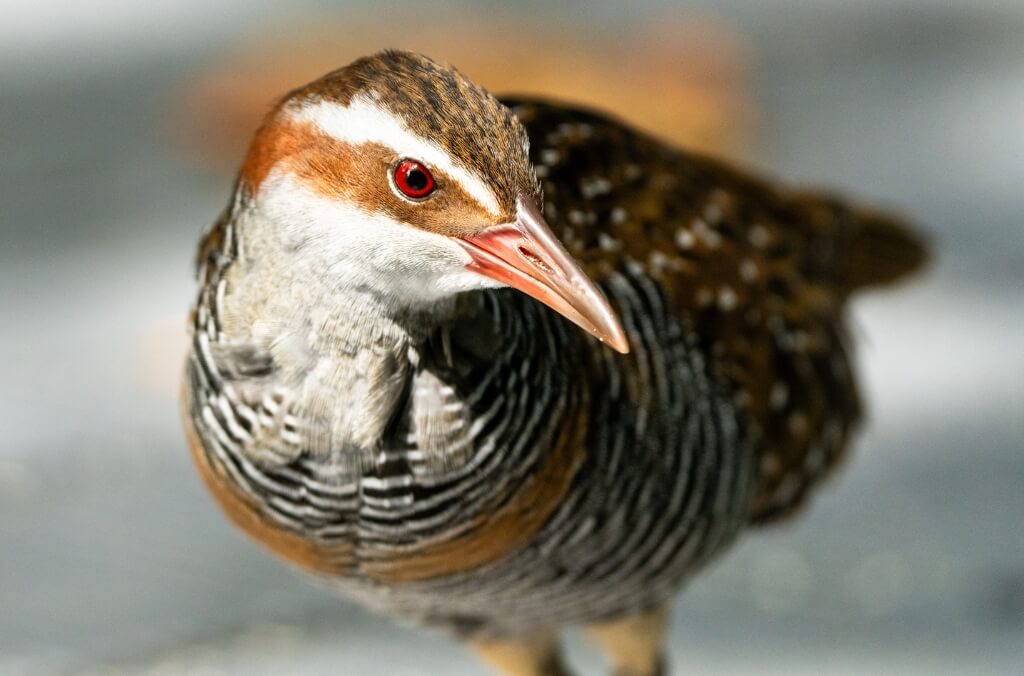Collaboration saves wildlife
This week, two sharp-eyed members of the public saved two native animals from meeting a terrible end.
Waterbird entangled
Following a report of bird entanglement from a community member, Park Ranger and Ecology staff found an Australasian Darter, a waterbird with a snake-like neck and sharp, pointed bill, struggling to remove a piece of fabric wrapped around its bill. It couldn’t free itself no matter how hard it struggled, and soon lay down exhausted on the island in the middle of Lake Belvedere.
Ecology staff to the rescue
As Ecology staff approached on kayaks, the Darter jumped into the water to get away from what it perceived to be predators. A ‘chase’ ensued with staff turning the kayaks round and round to follow the Darter; eventually it surfaced close enough to be captured with a net.
Juvenile Darter freed
We soon found out why the poor bird could not free itself. The Darter is a fishing bird and it has backward pointing serrations on its bill; these little barbs help it to hold on to wriggling fish, but it also meant that fabric that it pierced through while fishing could not be pulled off. The fabric was painstakingly removed bit by bit to prevent injury to the bird, and eventually the juvenile Darter was free to live another day.
Darters can be seen swimming with its neck above water or drying its wings on a tree or stump at Lake Belvedere. Look for these beauties and report any wildlife in trouble to Park Rangers on 0408 864 798.
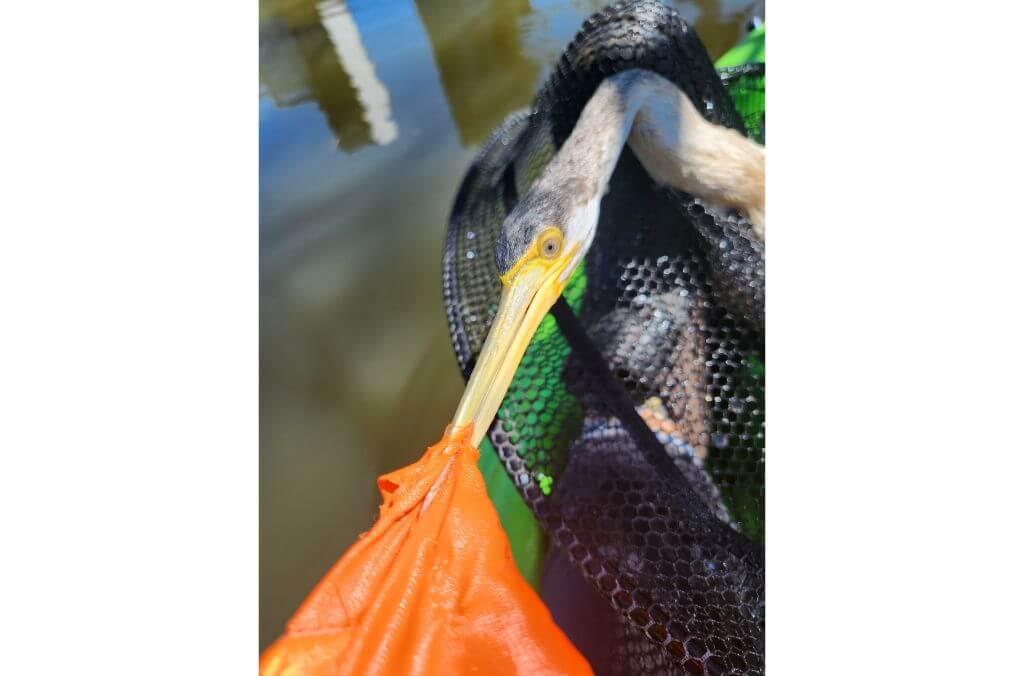
The Darter has backward facing barbs on its bill to hold on to fish. 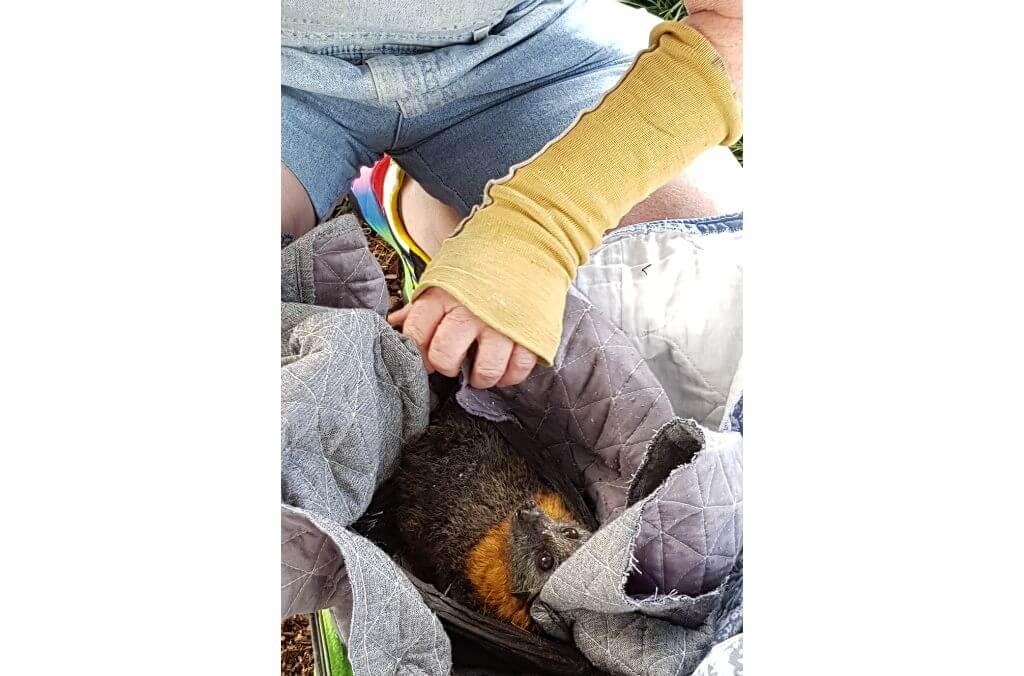
WIRES will look after this female flying-fox, a threatened species. 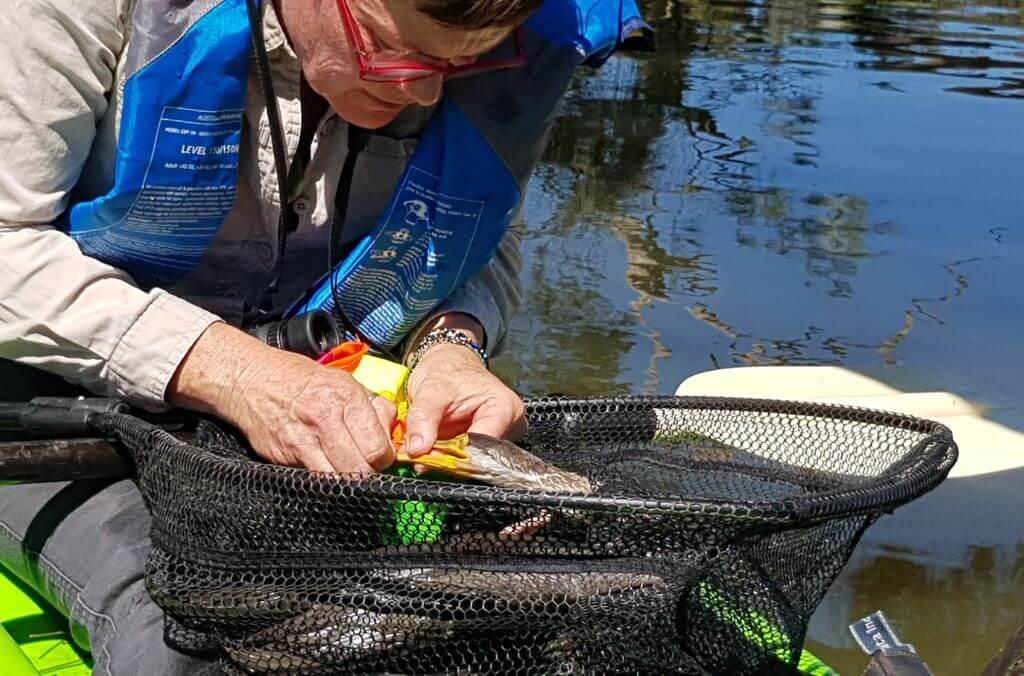
Ecology staff removing fabric around the bill of a Darter.
Flying-fox down
Flying-foxes (also known as fruit bats) roost on trees in a colony, so it’s not normal to see one on the ground being attacked by birds. SOPA staff received the request to help from the community through WIRES, a wildlife rescue and rehabilitation organisation, and quickly began to search for it.;
As Ecology staff approached, the flying-fox began crawling away. No longer able to fly but still feisty, the flying-fox tried to fight off the ‘predators’ by hissing and climbing a tree. Staff with appropriate training and vaccination to handle flying-foxes were able to use a thick jacket to contain the animal and keep it warm until WIRES member Meg arrived to triage the animal patient. The wings were still in good nick and the flying-fox will be given the rest it needs until it can return to the sky.
Important facts about flying-foxes
The Grey-headed Flying-fox is a long-distance night gardener, travelling up to 30km a night to feed on nectar, pollen and fruits such as figs, pollinating plants and spreading seeds along the way. It’s a threatened species and the survival of each individual is important to the species and the ecosystem that depends on them.
It’s important not to touch flying-foxes unless you have the appropriate vaccination. Please contact animal rescue and rehabilitation organisations such as WIRES and Sydney Wildlife for assistance.
Related articles
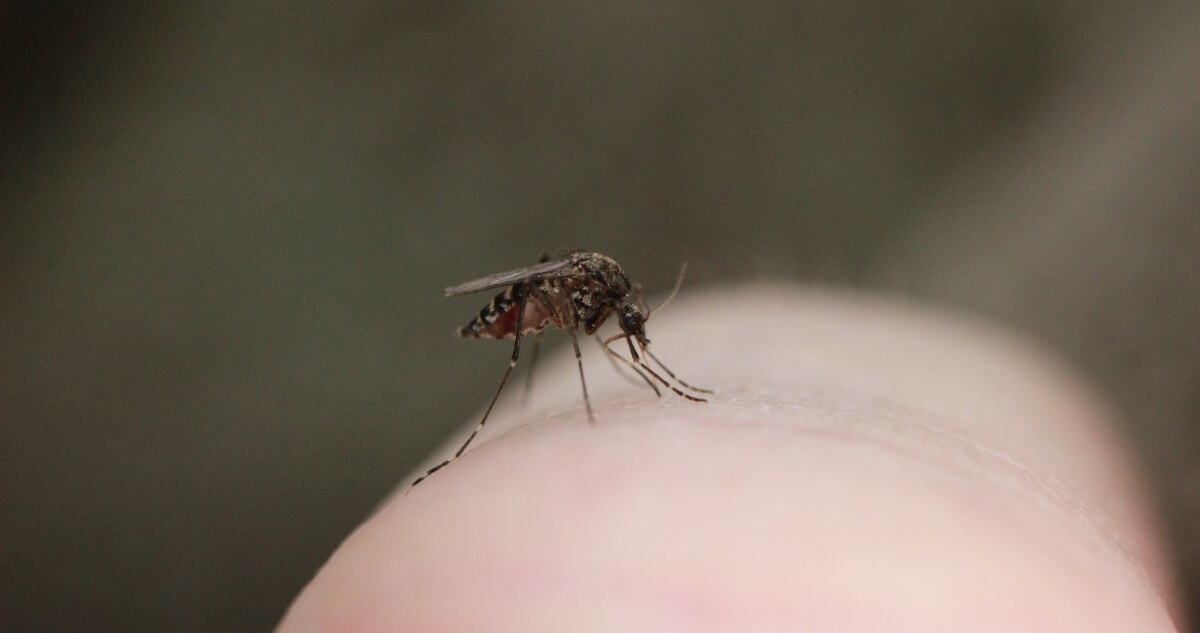

Sydney Olympic Park has been in busy preparing a gift for Park users that’s not wrapped in ribbon, but in science!
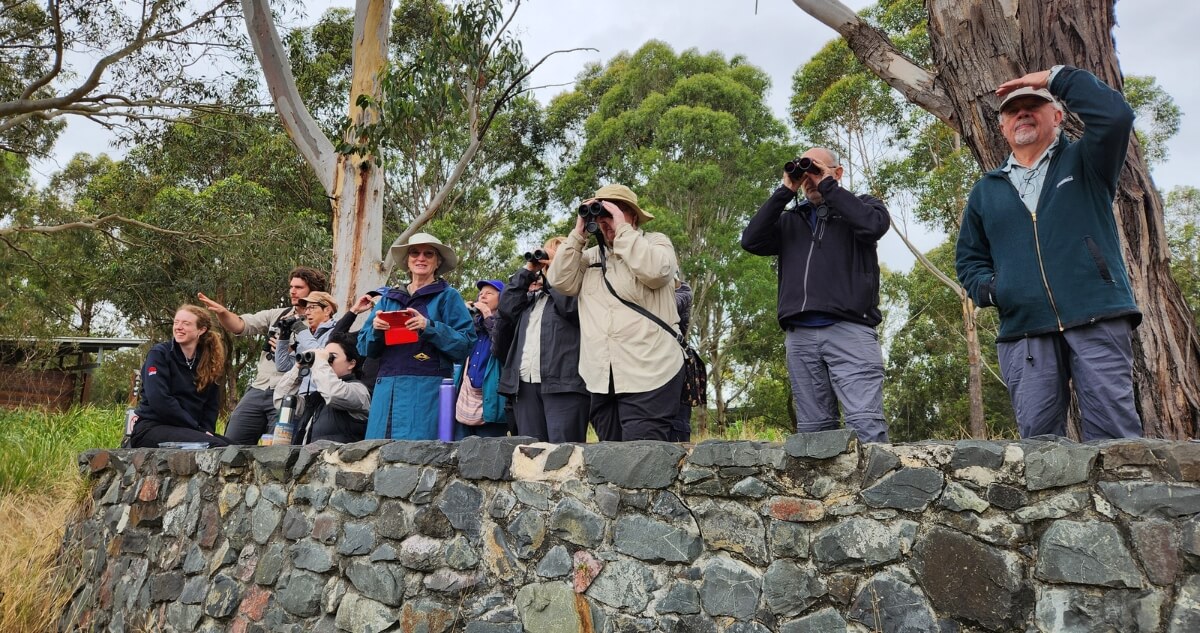

We’ve recently completed the 22nd annual Spring Bird Census 2025 at Sydney Olympic Park.
